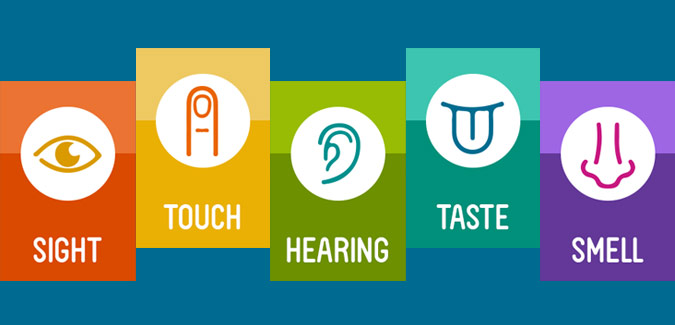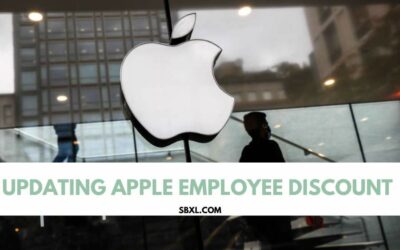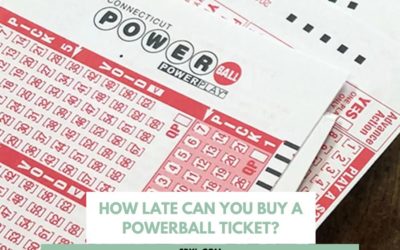Shoppers are known to use a number of senses in-store whilst shopping. In actual fact it is impossible not to receive constant input into the nervous system by way of the 5 senses.
The brain decides which sensory data is relevant at that moment (short-term memory) or pulls on an emotional trigger (long-term memory) and so it is possible to influence shoppers by each of the 5 senses or by using combinations. Understanding which senses they are using to buy what type of products goes hand in hand with neuro-linguistic programming (NLP). The result is a combination of analyses relating to the senses shoppers use to shop and those they use to mentally process information about a specific category, brand or product.
1. Visual Shopping (Sight)
95% of information sent from the eyes to the brain is ignored.
- 70% of information received by shoppers in-store is by way of visual cues
- Shoppers navigate visually by outline shape and contrast (shape/color)
- Only things seen in the foveal vision are processed in colour
- Women have a significantly wider peripheral vision than men
- Shoppers are much more visually aware of things below their eyes than above them
- When reading, shoppers scan parts of the text and ‘fill in the gaps (up to 70%)
Targeting the visual sense offers brands and retailers probably the largest single sense influencing opportunity. Mirrors will slow shoppers down, tall overbearing fixtures (and banks) will speed them up. Strongly contrasting colours will attract more attention than softer shades. Shoppers can process images much more quickly than any written descriptions. Also, they more quickly process images of raw unwrapped product compared with wrapped packs of product.
For example…
In a strongly repeat purchase environment, the things that shoppers tend to look at and mentally process are those that changed frequently, such as lottery details and the newsstand. Conversely, long-term POS once filtered over a few days became nothing more than ‘wallpaper’. In the clip below, an eye-tracking clip demonstrates just what the shopper looks at as they travel the aisle.
2. Auditory Shopping (Sound)
Influencing what shoppers hear in-store can offer significant sales opportunities.
- Playing classical music compared to pop, increased sales by 26%
- The same process increased the value of the average wine purchase by 40%
- Subtly slowing down familiar music by 6% increased time spent in store by 12%
- At the same time, money spent in that store rose by 18%
- Affirmative ‘good choice’ audio messaging at the point of purchase lead to a double digit sales increase
Targeting the auditory sense of shoppers works best if developing a multi-sensory campaign. For example, after leaving the store, shoppers will recall 15% of what they read, this will rise to 20% if they simultaneously see and hear the same message. However, if the written words and spoken messages are different but complement each other, then rate of recall jumps to around 70%.
For example…
When using NLP as part of Shopping Behaviour Research Analysis, it is possible to identify which sense shoppers rely on most when shopping a category. The results are often surprising: MP3 players are visual, as are mobile phones and computer speakers. New cars are in fact visual and auditorially processed. In the video below, even when shoppers buy products that are dependent on auditory qualities, many just use visual cues.
3. Olfactory Shopping (Smell)
As many as 30% of shoppers smell the products before buying.
- Smell is the only sense that isn’t processed as it enters the limbic system (part of the brain thought to regulate emotions)
- Aromas in-store can powerfully link brands to their usage and consumption occasions
- Humans are able to recognise in the region of 10,000 different smells
- Shoppers tend to process smell information in context to the types of products they are shopping (trainers in a sports store, fine French cheese in the deli etc.)
- Olfaction (mainly unconscious) is important in such functions as sexual preference, and recognition of other people
Influencing shoppers by way of olfactory stimulation has proved to be an effective and yet subtle method of communication. Fresh bread smells in the supermarket, freshly mown grass in the sports store and the scent of the latest perfume coming of the duty free trolley in the aircraft are all example of conscious attempts to influence the sub-conscious of shoppers. With regard to targeting this sense, it is important to provide shoppers with context so that they take away the intended positive emotional associations, instead of any unforeseen negatives.
For example…
In beauty categories when anywhere between 20% and 30% of shoppers smell the products as part of the evaluation, it is always surprising that some brands prevent this trigger to purchase by sealing the packs. Another olfactory consideration is what the general smell of that part of the store is. Does it help or hinder sales (A strong smell of curry in the lingerie department didn’t!) Watch below as a couple of shoppers clearly use smell as part of the product selection process.
4. Touch Shopping (Touch)
Shoppers associate the quality of an item they are looking at with what it feels like.
- Physical texture, weight and even temperature are all used by shoppers to evaluate products
- The most sensitive areas of your body are your hands, lips, face, neck, tongue, fingertips and feet
- The least sensitive part of your body is the middle of your back
- Shivering is a way your body has of trying to get warmer
While the other four senses (sight, hearing, smell and taste) are located in specific parts of the body, your sense of touch is found all over. This means that there are numerous ways to influence shoppers: Softer underfoot sensation will slow them down, colder and harder surfaces speed them up… Ask a shopper to compare the quality of 2 mobile phones (1 with a battery attached and 1 without) and the heavier wins out almost every time. Touch is a sense exploited by some market sectors and completely off the radars of others. Because it is possible to create tactile influence from numerous parts of the body, the potential (positive and negative) shouldn’t be ignored.
For example…
In a very subtle example of using touch to help trigger sales, shoppers were encouraged to feel home furnishings products on a particular fixture. Unbeknown to them, the area around the fixture also had a very soft floor covering which sub-consciously enhanced their overall perception of soft and quality attributes for that particular brand. In the clip below, watch how a number of shoppers are placing great importance on being able to touch the products.
5. Taste Shopping (Taste)
Taste is the weakest of the 5 senses, so we need multi-sensory merchandising in-store.
- The tongue (and roof of your mouth) has 3 areas of specialty: Bitter, Sour, and Salty/Sweet
- We have almost 10,000 taste buds inside our mouths, on our tongues and even on the roofs of our mouths
- In general, women have more taste buds than men
There are only limited opportunities to influence shoppers using taste. For example, the familiar tastings in supermarkets are a means to introducing shoppers to new products. More subtly are the types of taste test that tempt a shopper to buy more afterward. This failed when a toffee store offered free samples to passers-by. Unfortunately by the time they had managed to eat the freebie they had walked some 300 yards away from the store, doh!
For example…
In order to create a taste sensation in shoppers’ mouths, they don’t have to actually imbibe any food. Research has shown that they can be made to salivate and feel hungry by the use of effective visuals supported by thought-provoking explanatory text (dual encoding the taste message). See below for a good example of what is little more than theft! However, it is surprisingly common practice in the pick ‘n’ mix aisle.
Reference source:
- The Five (and More) Senses – LiveScience
- Sense – Wikipedia
- Human sensory reception – Britannica









0 Comments